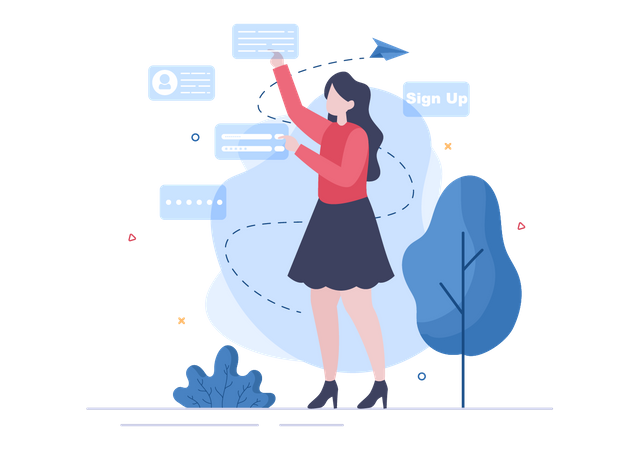Only 19% of surveyed HR professionals believe their organization has the most appropriate work culture and that there are considerable possibilities to improve and innovate. In fact, the art to keep the employees in good humor, resonating to their aspirations are areas of prime concern. From the infamous practice of trying to please the boss to focus on the employees, HR has channeled through an evolution worth learning from. Detaching from the traditional work ecosystem of permanent hiring, getting resources as per the demand, on time-bound contracts is the newest rage. As we usher into an exciting 2022-23, Human Resources across verticals are undergoing compelling changes. Here’s what will be the Benefits HR transformation.
A More Flexible Work Culture
There is so much happening with regards to work regulations that are alterable as per the comfort of the employee and the interest of the company. Organizations offering paid maternity leaves to others that offer utmost freedom to work from home, employee-friendly work culture was hugely accepted in 2021, and it’ll only grow this year.
- Professionals are returning to the job market after successfully or unsuccessfully launching their commercial ventures.
- Employees are demanding such working hours that give them enough time to spend with their family members
- More and more women are returning to job markets after career breaks due to childbirth or other trivial matters
As recruiting and retaining talent becomes difficult, companies need to be accommodating to fulfill employees’ aspirations, as a step forward to control attrition rates.
Fixed Job responsibilities, not anymore
Gone are the times when sticking to a project assignment or a particular client for a decade (exactly! You read that) was the dream job every candidate hunted for. With flexible work culture comes flexible job roles and responsibilities. As one of the entailed skills today, adaptability is a crucial differentiator in an employee’s growth. That is, they ought to master the art of learning new skills as and when required. It may so happen that while you were recruited for an entirely different portfolio, you could be shifted to a wholly new department depending on the fluently changing requirements/ increase or decrease of workload in a particular project
Updating Employee Talent – Training And Mock Projects
22% of new hires leave their job within 45 days, and that converges to employee retention as one of the toughest roles in HR. Following up on the need for more adaptable resources, expertise in a single field may no longer ticket to a successful career. Assisting employees, it is the HR wing that has to create sufficient opportunities and empower the employees to engage in learning new roles.
Moreover, as an employee, you need to keep updating your skill set pretty fast to respond positively to rapidly changing job markets. Check with the senior management who may be more than interested in helping you in this regard. Employers are looking for ways to cut costs and would like to recruit a lesser number of employees for performing tasks, and if you can handle multiple roles, you would become darling of your employer.
Steering away from human dependency, Digital learning is being widely used in organizations so that the employees educate themselves on skills without having to wait for a trainer’s availability. Human Resources across SME channel have confirmed it to be a hugely cost-effective – for multiple learning opportunities that employees can avail. Sponsored technical courses, communication skills training, etc. can be attended virtually followed by attested certifications; the fastest-growing markets, online learning has so much more to offer. This is also one of the benefits of Hr transformation.
AI in HR – More intelligent than ever
AI is everywhere, and HR is one of the first verticals to have directly benefited from it. AI-enabled platforms instantly remove 75% of irrelevant or unqualified job applications, shifting the needle to the most appropriate candidates. As Talent Acquisition gets less stressful, HR functions ought to improve with productive employees and ultimately lower attrition rates. Not to miss employee retention, is cited as the most troubling HR function by more than 60% of organizations. Predictive thinking from AI can hint at possible affinities and the expectations of the staff. Such analyses have been instrumental in finalizing specific appraisals for different employees.
2022 will see Artificial Intelligence (AI) being increasingly adopted across HR functions. Followed by the stupendous response to the bots, many other operations will be automated to delegate tasks to smarter systems. Better Decisions are assured.
The Gig Economy on The Rise
As per The Mckinsey Global Institute, up to 30% of 8000 professionals surveyed were indulged in some independent jobs in parallel to their full-time employment. Any employer would like to cut down on corners to reduce costs and maximize profits. On the other hand, some professionals do not associate themselves with traditional work environments. Instead, they want to chart a career path that was rarely seen or heard before. This has primarily given rise to gig economy. That is, hiring on-demand resources for a particular task within a contract. More popularly, freelancers, such resources are necessarily cost-effective, more productive and readily available to take up extempore assignments.
More than the zest for a supplementary source of income, freelancers are steadily moving away from full-time employment towards more flexible and less demanding independent job roles. In fact, 50% of these professionals (mostly designers, writers, and developers) never returned to their full-time jobs.
Eliminating the dependency upon intermediaries, short-term gigs are win-win scenarios for everyone involved in the process. Starting in 2022, the two years will see a soaring rise in more important roles being assigned to freelancers. As HR, you must acknowledge the benefits of transformation and stay in tune with professionals from this sphere too.
And ultimately,
The downsizing of HR teams
As automation dawns upon us, HR roles are being routinely performed by smart systems. As a result, HR departments are being cut to leaner teams. Instead of finding a replacement for an employee who may be leaving for a different employer, tasks are getting distributed instead of finding a replacement. Hence, HR assistants, advisors, and business partners are becoming less relevant in most organizations.
2021 was the year of cost-cutting while the current year has its focus on experimentation. In either case, both the employee and the management had to retune their expectations. Hope this article has helped you to learn HR Transformation benefits and their importance. Please feel free to leave comments regarding any quiries.




